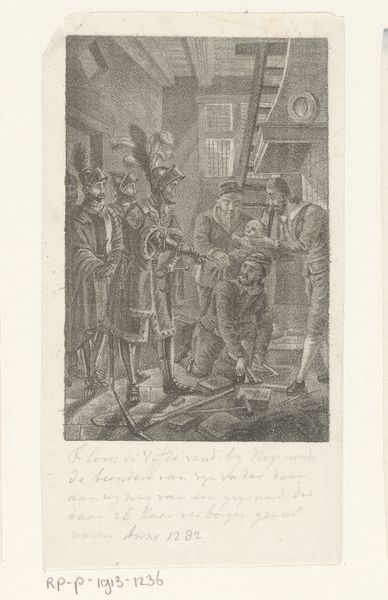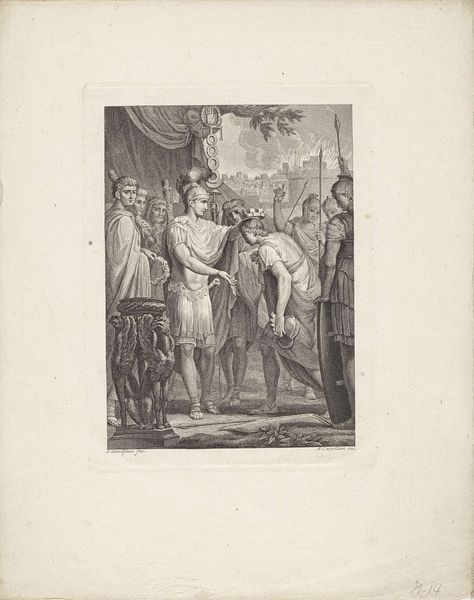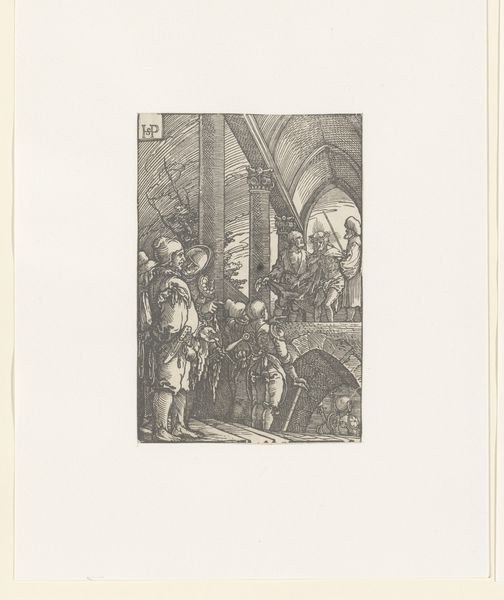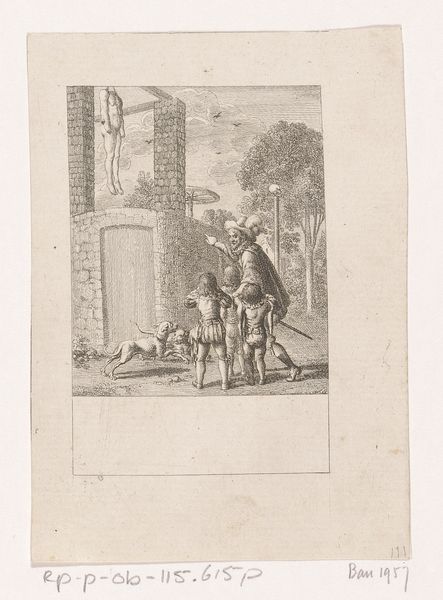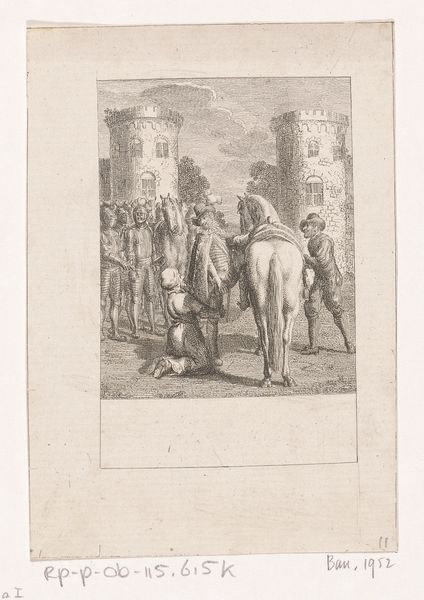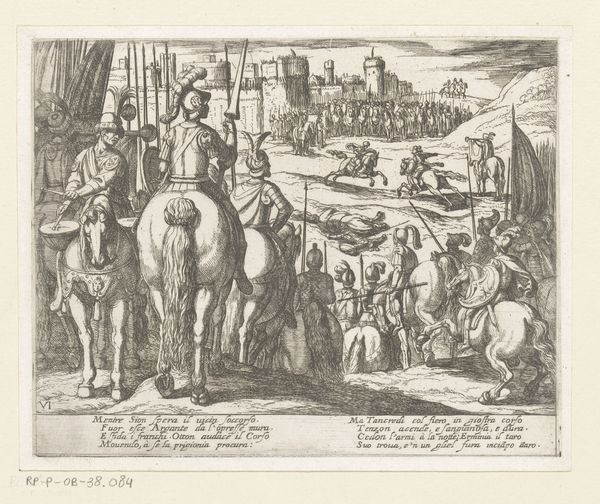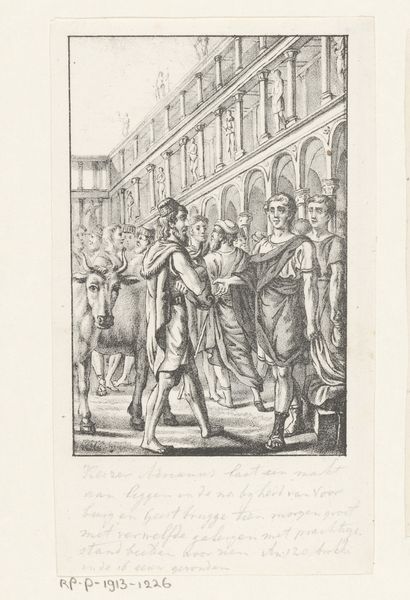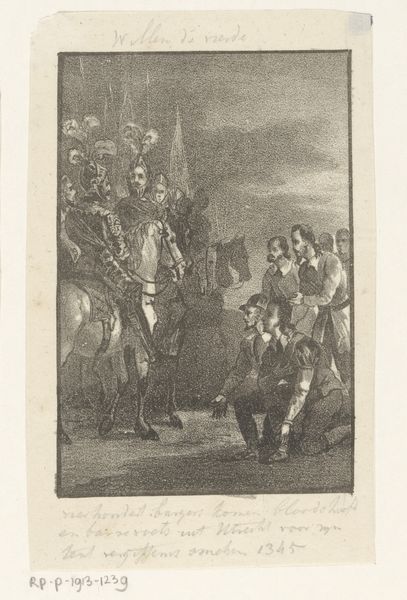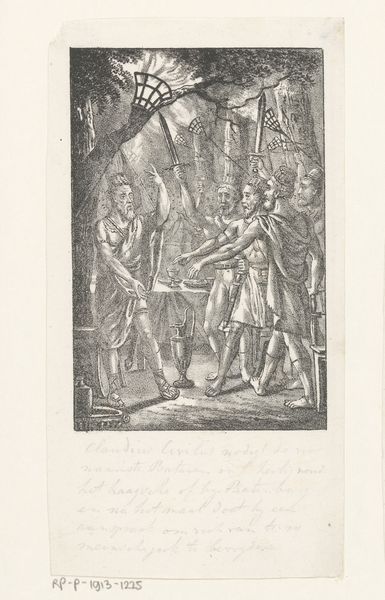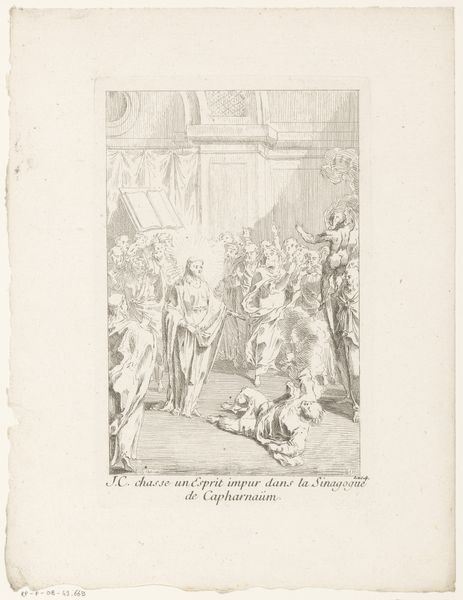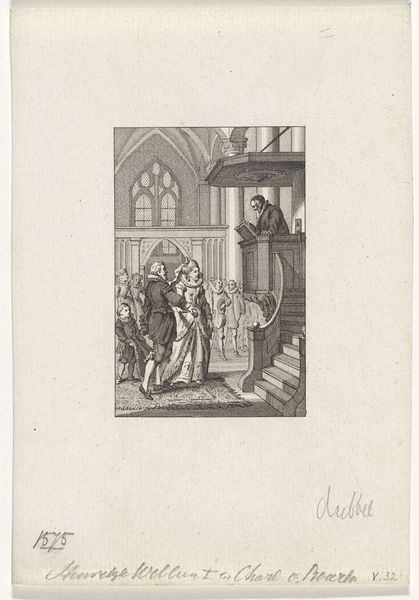
#
comic strip sketch
#
aged paper
#
light pencil work
#
pencil sketch
#
light coloured
#
old engraving style
#
personal sketchbook
#
old-timey
#
sketchbook drawing
#
pencil work
Dimensions: height 160 mm, width 90 mm
Copyright: Rijks Museum: Open Domain
Curator: What an intriguing image! This is "Karel III volgt een lijkstoet," which translates to "Charles III Follows a Funeral Procession," dating sometime between 1809 and 1899. It appears to be a light pencil sketch. Editor: My initial feeling is somber. The composition leads the eye directly to that skull and crossbones above the procession—a clear memento mori. The sketch work lends a ghostly quality, doesn't it? Curator: Indeed. Funerals during this period were heavily influenced by social and political landscapes. Consider the French Revolution’s impact; public mourning and expressions of civic virtue were often intertwined. Was this a genuinely sorrowful event, or carefully orchestrated propaganda? Editor: A vital point. The very public nature of the procession suggests a constructed narrative, and raises all sorts of questions: Who gets to be mourned in such a grand way? What purpose does the display serve the monarchy? Is this about solidifying power, silencing dissent, or something else? Curator: Also, it is striking how class plays a role in the image as you see commoners at the margins looking at the elite figures actively participating in the procession. This can further expose themes of power and identity that have a long history, particularly regarding this artwork. Editor: Thinking of Charles III himself, what's his positionality to all this performance? Is this a reflection of his authority, but also, and at the same time, about his own mortality? What's he grappling with in that historical moment? Curator: The artist captures something potent here, revealing the ways societal rituals mirror and enforce hierarchical systems. Understanding its political and cultural climate gives us greater awareness of this relationship. Editor: Absolutely. It allows us to see that this sketch doesn’t only capture the external event, it reflects internal struggles and power dynamics within early 19th century European society.
Comments
No comments
Be the first to comment and join the conversation on the ultimate creative platform.
